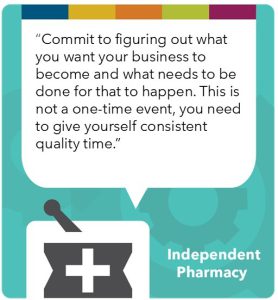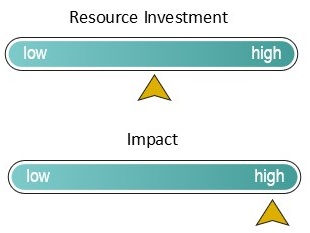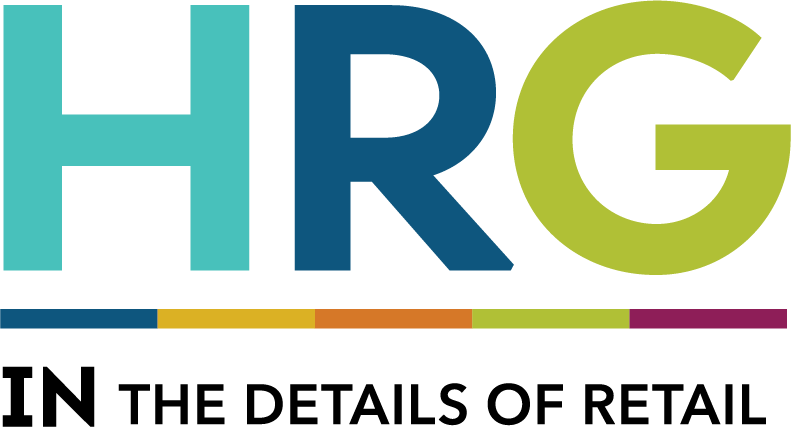By Julie Bonnell, vice president operations, for the “Profits in the front end” blog series
Recently, I was talking with retail experts who work for companies which support independent pharmacies. The topic of discussion was unique tactics stores were using to drive business, and whether there was a way for HRG to support these types of efforts so more stores could take advantage of their innovative ideas. It was a great discussion of possibilities until one person pointed out that a lot of the ideas weren’t new, and that they didn’t believe the majority of independent pharmacy owners would try any of them because they are short-staffed and don’t have time.
support these types of efforts so more stores could take advantage of their innovative ideas. It was a great discussion of possibilities until one person pointed out that a lot of the ideas weren’t new, and that they didn’t believe the majority of independent pharmacy owners would try any of them because they are short-staffed and don’t have time.
Rather than feeling defeated I decided that I really needed to contemplate this. Afterall, the conversation started with shared stories of what some pharmacists are currently doing, and their businesses are growing. So, if some could do it, what made them different from those who couldn’t? Thinking through the success stories, the common string was these pharmacy owners spent time working on their business in addition to working in their business.
To put that another way, working on your business means focusing on long-term strategies for growth. Working in your business means taking care of what has to get done on a daily basis.
Being a champion of small businesses in all classes of trade, I decided to talk to a friend who has made a career out of mentoring small business owners. Makes sense to ask someone who has seen plenty of success and failure to help me refine this thought into something actionable and useful! Here is a summary of our conversation.
Starting with the basics, the founder or owner of the business usually has a skill or talent that is needed/valued by the community they serve. The business became something of value primarily on the efforts of the founder. And then they hit a spot when doing what they’ve always done is no longer growing the bottom line. And in fact, they are showing signs of exhaustion. We talked about this standstill — it often occurs when revenue reaches $2 million in sales.
So, what to do? If you’re one of these owners, you have probably spent all of your time working in the business to make it grow. Growth now jumpstarts with a decision — are you ready for the business to evolve? And are you ready to examine the on vs. in decision and what is necessary to restart growth?
I used to be a guest speaker for another friend who taught at the University of Wisconsin-Milwaukee, explaining the importance of company culture to his MBA students. I would always start the evening by asking the students if they wanted to be a 1099 or a W2 in the future. What I was really asking was “Do you want to be working on your own business, or do you want to help someone else effectively grow their business?” The small business owner, and that includes pharmacy owner/operators, needs to ask themself this. There is no right or wrong answer, you just need to be honest with yourself in order to set a path. I remember a student coming up to me after one class saying, “I didn’t spend my money to get a degree to have to handle day-to-day operations.” I think that meant she won’t own a business in the future unless it means she can employ others to do that for her. And I give her credit for being able to clearly define what she wanted.
Getting back to you, the small business owner, the reality is you probably don’t have the resources to hire someone to execute a business growth strategy – at least not in the beginning. And some of the decisions that will need to be made require you to have a vision of what you want the business to ultimately look like – your goal and desired position in the community. The first step in the journey is to commit time – block off time on your calendar and DON’T DELETE IT. Commit to figuring out what you want your business to become and what needs to be done for that to happen. This is not a one-time event, you need to give yourself consistent quality time. How much time? Well, that is up to you. Knowing you have things to do right now, can you find one hour a week for the next 90 days? Setting a process and owning it and holding yourself accountable is probably the hardest step to take – the default for a small business owner is to be always in. But if you can make the commitment to working on, the possibilities are there for you to evolve your business in so many ways.

Although the initial resource investment will be high, the ongoing resource spend will be somewhere in the middle.
